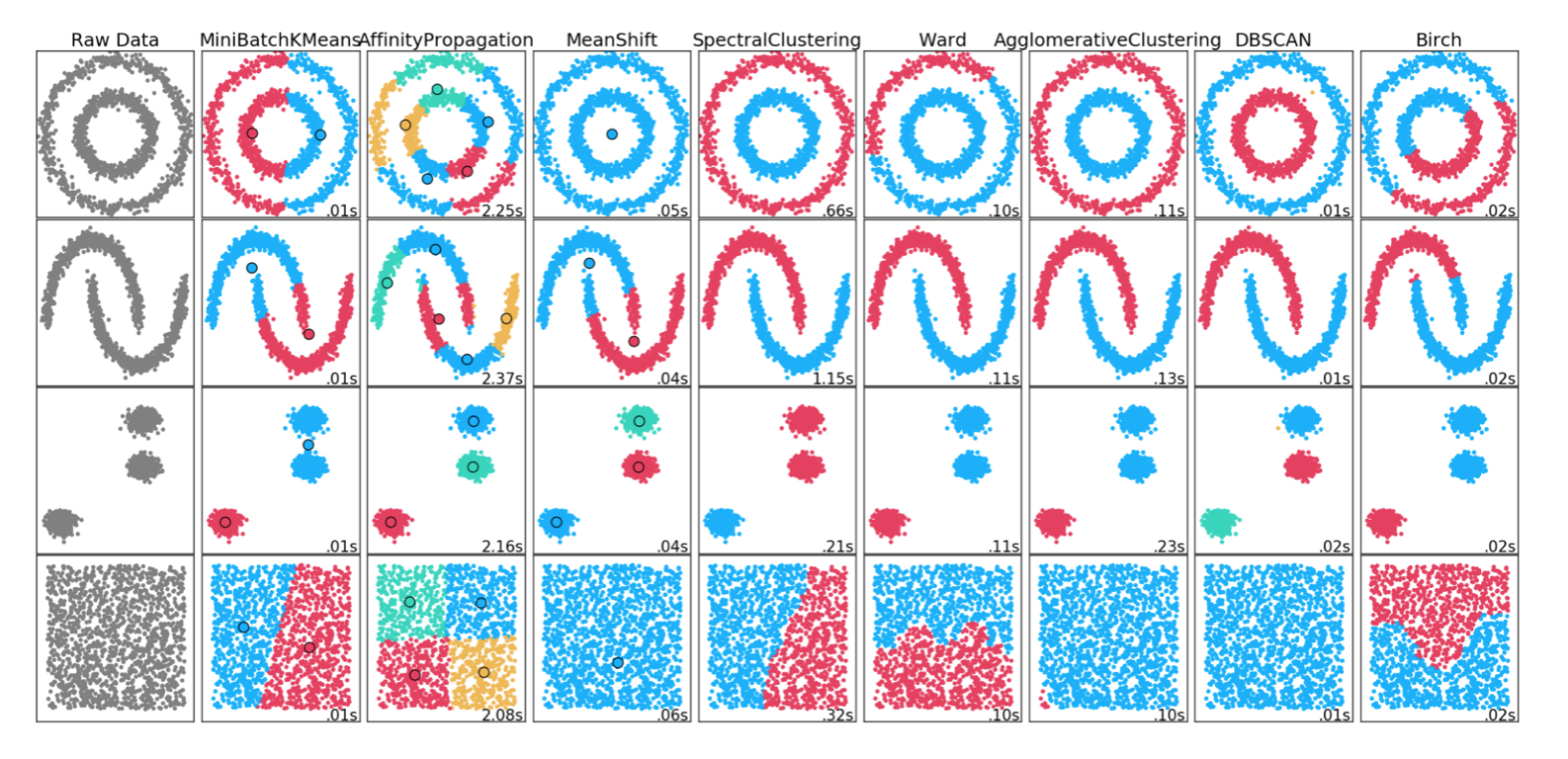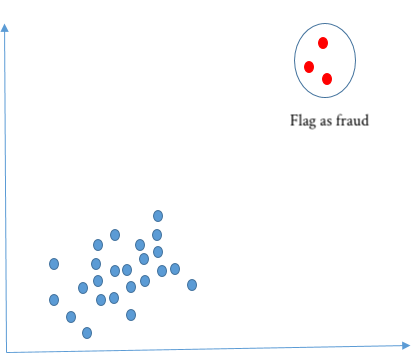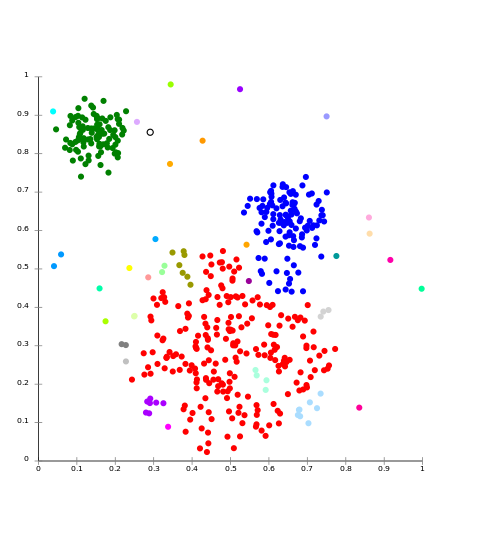Other clustering fraud detection methods
Fraud Detection in Python

Charlotte Werger
Data Scientist
There are many different clustering methods

And different ways of flagging fraud: using smallest clusters

In reality it looks more like this

DBSCAN versus K-means
- No need to predefine amount of clusters
- Adjust maximum distance between points within clusters
- Assign minimum amount of samples in clusters
- Better performance on weirdly shaped data
- But.. higher computational costs
Implementing DBSCAN
from sklearn.cluster import DBSCAN db = DBSCAN(eps=0.5, min_samples=10, n_jobs=-1).fit(X_scaled)# Get the cluster labels (aka numbers) pred_labels = db.labels_# Count the total number of clusters n_clusters_ = len(set(pred_labels)) - (1 if -1 in pred_labels else 0) # Print model results print('Estimated number of clusters: %d' % n_clusters_)
Estimated number of clusters: 31
Checking the size of the clusters
# Print model results
print("Silhouette Coefficient: %0.3f" % metrics.silhouette_score(X_scaled, pred_labels))
Silhouette Coefficient: 0.359
# Get sample counts in each cluster
counts = np.bincount(pred_labels[pred_labels>=0])
print (counts)
[ 763 496 840 355 1086 676 63 306 560 134 28 18 262 128 332 22
22 13 31 38 36 28 14 12 30 10 11 10 21 10 5]
Let's practice!
Fraud Detection in Python

